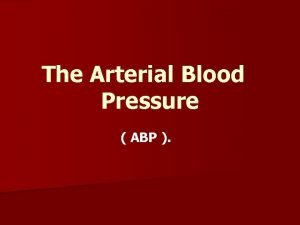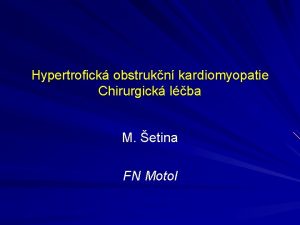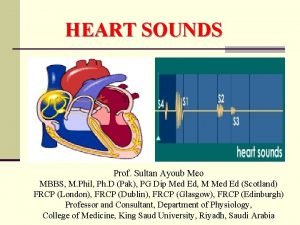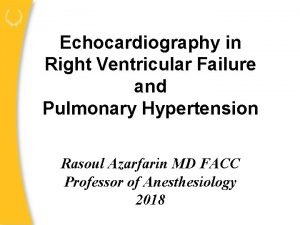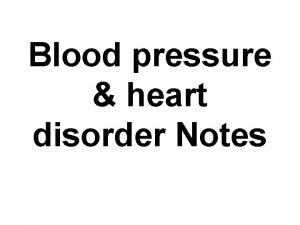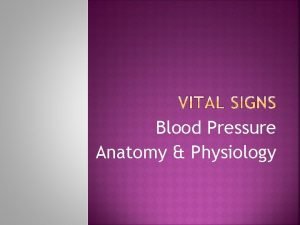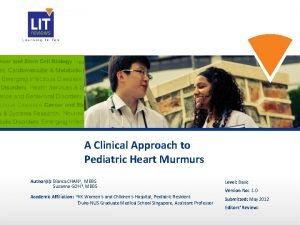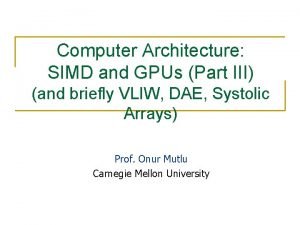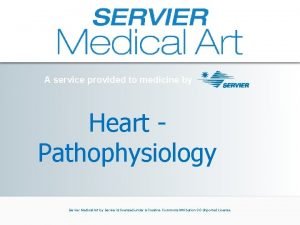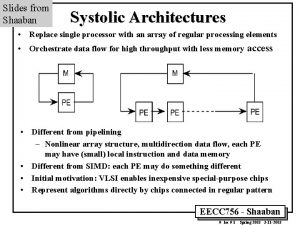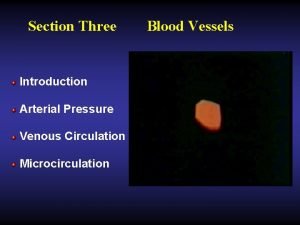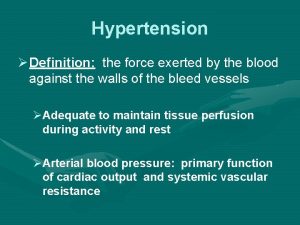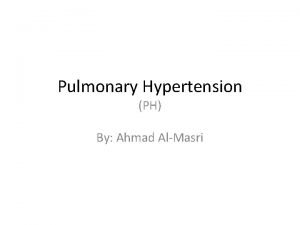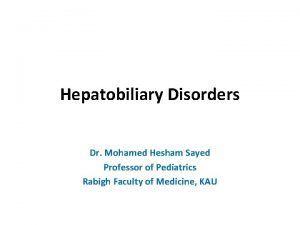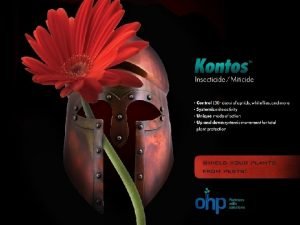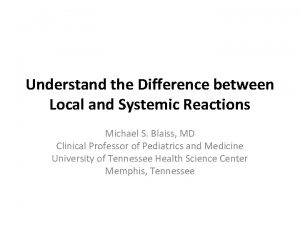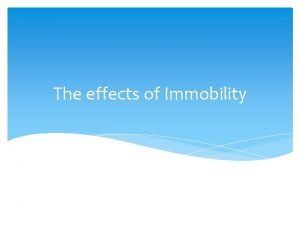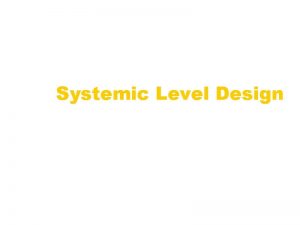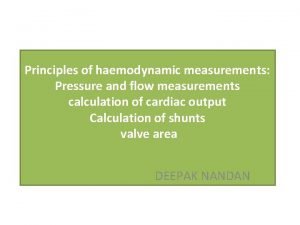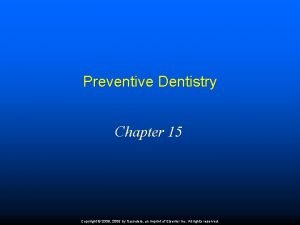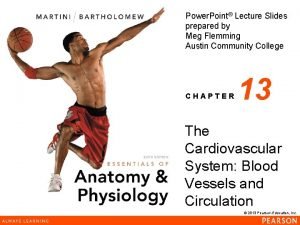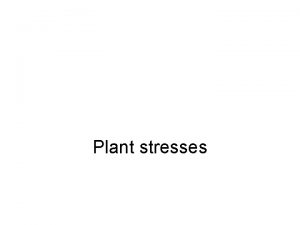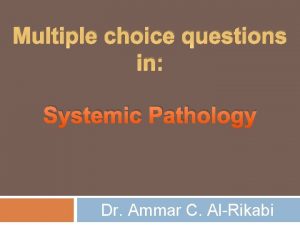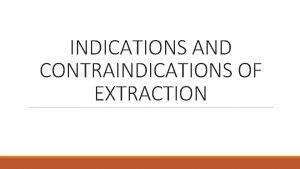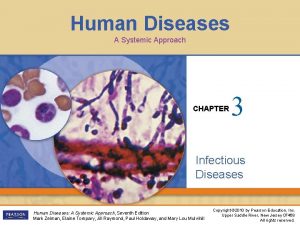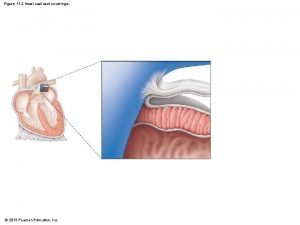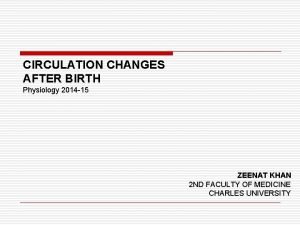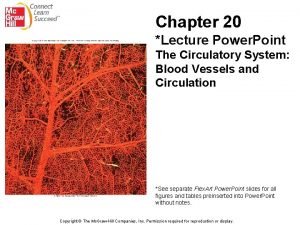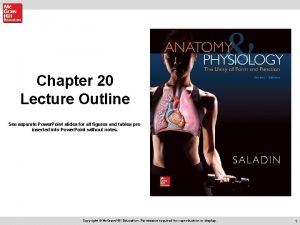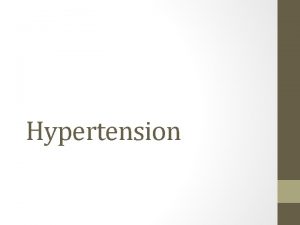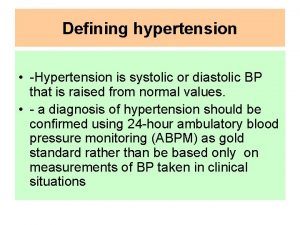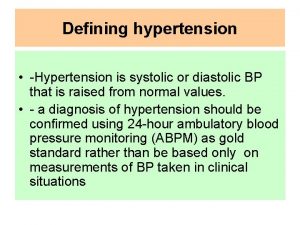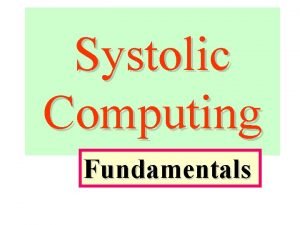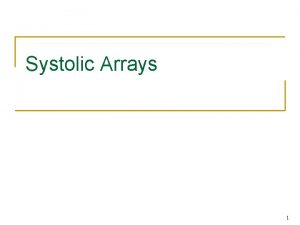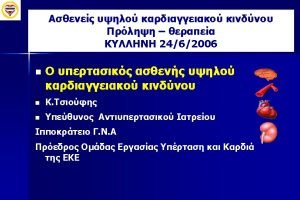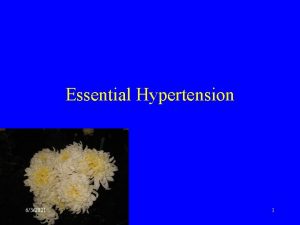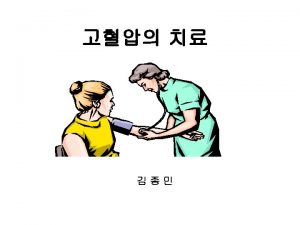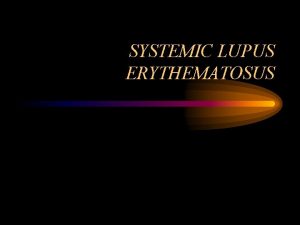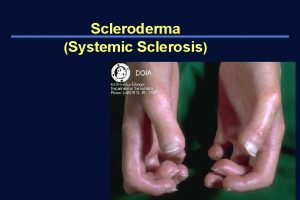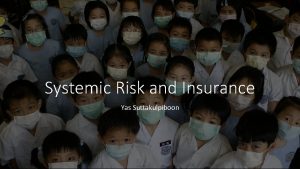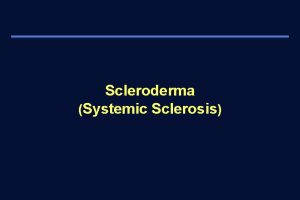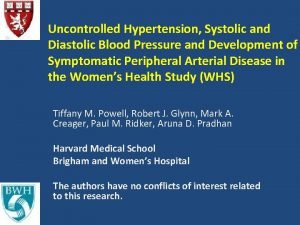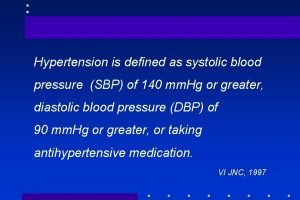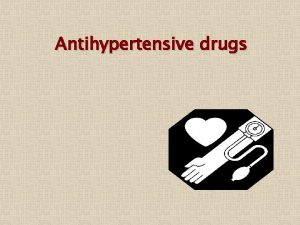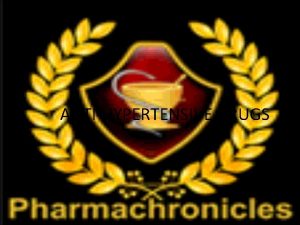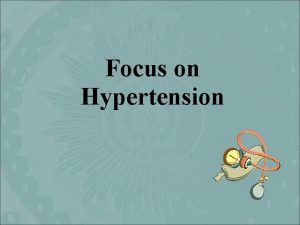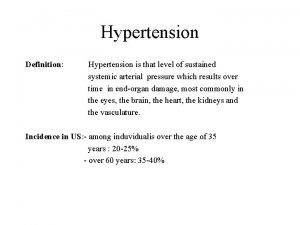Childhood Hypertension Hypertension Definition Systolic or diasystolic systemic












































- Slides: 44

Childhood Hypertension

Hypertension Definition • Systolic or diasystolic systemic arterial blood pressure above normal for age. • 5 to 10 mm Hg above 95 th % for weight and height for those in the 50 th %. • Quick Formula for estimation of 95 th% BP: – Under one year of age: 100/70 – Over one year of age: • Systolic BP: 100 + 2(Age) • Diasystolic BP: 70 + 1. 5 (Age)

The Fourth Task Force Report on Pediatric High Blood Pressure

Correct Measurement • Blood Pressure Cuff – Length: 2/3 rd of the arm from the olecronan to acromion. (2/3 rd length of humerus) – Bladder (rubber bag) of the BP cuff needs to cover the entire circumference of the upper arm

Infant Blood Pressure Readings • Infants (12 months and below) – Use a Doppler ultrasound device – BP cuff still needs to remain 2/3 rd length of humerus and rubber bag needs to fit the circumference of arm. – No Leg Blood Pressure standards exist and DO NOT use – Leg Blood Pressure check only for checking Coarctation of aorta

Please Note! ONE MOST COMMON CAUSES OF APPARENT HYPERTENSION IS ERRONEOUS MEASUREMENT FROM USING TOO SMALL A BLOOD PRESSURE CUFF!

Childhood Hypertension Chart

http: //www. statcoder. com/growthcharts. htm

Stage 2 Hypertension > 5 mm above 99%le Stage 1 Hypertension 95% to 5 mm above 99%le Pre-Hypertension 90 -95% le Normal < 90% le

Disease Prevalence in Childhood • • • Congenital heart disease Epilepsy ADHD Asthma Hypertension Obesity 1% 3 -5% 7% 4 -5% 18 -25%

Age-Related Hypertension • Neonate and Infants – Renal Artery Thrombosis • Umbilical venous and arterial catheter – – – Renal Malformations Bronchopulmonary Dysplasia and Abdominal Surgeries Coarctation of Aorta Drugs Increased Intracranial Pressure • Infections, bleeding and tumors

Top Causes of Hypertension in the School Age Child Chronic UTIs Glomerular Disease Renovascular Disease 78 % 12 % Aortic Coarctation Essential Hypertension 2%

Age-Related Hypertension • Adolescents – Essential Hypertension – Obesity – Illegal Drugs – Renal Parenchymal Disease – Renal Artery Stenosis – Birth Control Pills

Zebras of Childhood Hypertension • Immobilization Syndrome: Prolonged bed rest and traction – Guillian-Barre Syndrome – Hypercalcemia • • • Acute intermittent porphyria Mercury and Lead Poisoning Cyclic Vomiting Hypervitaminosis A or D Neurofibromatosis

Single Mutation Hypertension

GENES

Work Up: Hypertension • History – – – – Family history of Hypertension Drug Use and OTC medication History of Urinary Infections: Reflux Nephropathy Prescribed Medications History of Lead Exposure Weight Gain or loss Symptoms of palpitations, sweating, headaches, heat intolerance, and nausea and vomiting

Rule of Thumb #1 The Younger the Patient with Hypertension, the More Likely you’ll find a Cause

Rule of Thumb #2 The Higher the Blood Pressure, the more likely there’s a cause

Arm & Leg BPs B What’s Normal? 1. A = B = C A 2. A = B > C C 3. A = B < C 4. A > B > C

Eye Grounds

Labs & Imaging Young Stage 1 or Stage 2 Renin Angiogram Catecholamines Urine Steroids Teenager Stage 1 RFP Urinalysis Renal Ultrasound + + Pre-Hypertension Lipids Fasting Glucose Echocardiogram Retinal Exam

Pre-Hypertension Lipids Fasting Glucose Echocardiogram Retinal Exam LVH on an echocardiogram is the most common end-organ manifestation in pediatric hypertension Essential hypertension almost always occurs with other risk factors

Teenager Stage 1 RFP Urinalysis Renal Ultrasound Quantitate any abnormal urine protein There’s no normal creatinine in pediatrics, but there is a normal GFR. Renal vessel doppler are of questionable value.

Young Stage 1 or Stage 2 Renin Angiogram Catecholamines Urine Steroids Plasma renin is usually uninterpretable. Elevated urine catecholamines are usually transient and not subtle. Don’t bother with MRAs or nuclear scans; the gold standard is an angiogram.

Ambulatory Blood Pressure Monitor

Work Up: Hypertension • Physical Examination – – – – Obesity Steriod-Related: Buffalo Hump, Striae, virilization Café-au-lait spots; elfin facies and mental retardation Papilledema Displaced Left ventricular Apex Abdominal Mass Bruits

Work-up: Hypertension • Lab – Chem 10: electrolyte pattern and renal function • Hypernatremia, hypokalemic and metabolic alkalosis: Mineralocorticoid excess – Urinanalysis: renal parenchymal disease – Thyroid Studies – 24 hour Norepinephrine urine and metaphrines: Pheochromocytoma – VMA, HMA and catholamines: Neuroblastoma

Work-up Hypertension • Radiology – Renal US with Doppler flow: RAS and renal anomalies – CT angiogram or MRI/MRA: RAS and Neuroblastoma – CT Head: Increased IC pressure

Hypertensive Emergencies • Severe Hypertension – Above 99 th percentile – End organ damage • Headache, blurred vision, seizures, papilledema, congestive heart failure or renal failure • Treat Immediately!

Left Ventricular Hypertrophy • Most common manifestation of end-organ damage in pediatric hypertension

Target-organ abnormalities are detectable in hypertensive children and adolescents. • LVH reported (51 g/m 2. 7) in 34 -38% of children with mild, untreated HTN with high correlation to BP and in particular ABPM • Working Group Recommendations: – Echocardiographic assessment of LV mass should be performed at diagnosis of HTN and periodically thereafter. – The presence of LVH is an indication to initiate or intensify antihypertensive therapy. • NO STUDIES HAVE BEEN DONE TO DEMONSTRATE REGRESSION WITH THERAPY AS YET (one completed and results pending)

Hypertension and CKD Progression NAPRTCS CRI Database: • • Cr. Cl < 75 ml/min/1. 73 m 2 HTN: >95 th % (Task Force) Normotensive: n=1987 (52%) Hypertensive: n=1874 (48%) P<0. 001 58% 49% • Endpoint: – ↓ Cr. Cl by 10 ml/min/1. 73 m 2 – Renal replacement therapy Mitsnefes et al, J Am Soc Nephrol 2003

New HTN patients (n=53) and NTN controls (n=33) HTN defined as BP > 95 th percentile, and overweight BMI >25 kg/m 2

Recognizing or ruling out a hypertensive emergency is the 1 st order of business in any hypertension evaluation.

Emergency Medication • Vasodilators – – – Sodium Nitroprusside IV gtt Hydralazine IV Minoxidil po Nifedipine po Nicardipine IV Enalapril IV • Cardiac – Labelatol IV – Esmolol IV

Stepwise Approach • • Weight Loss Low Sodium Diet Increase Cardiovascular Activity Medications

The DASH Diet • • • • • Daily Nutrient Goals Used in the DASH Studies (for a 2, 100 Calorie Eating Plan) Total fat 27% of calories Sodium 2, 300 mg* Saturated fat 6% of calories Potassium 4, 700 mg Protein 18% of calories Calcium 1, 250 mg Carbohydrate 55% of calories Magnesium 500 mg Cholesterol 150 mg Fiber 30 g * 1, 500 mg sodium was a lower goal tested and found to be even better for lowering blood pressure. It was particularly effective for middle-aged and older individuals, African Americans, and those who already had high blood pressure. g = grams; mg = milligrams

DASH Studies • Quick effect (within 2 weeks) • Low sodium, high potassium

Treatment of Pre-Hypertension • The TROPHY Trial • RCT of adults with BPs <140/90 – Placebo vs. candesartan (ARB) • At 2 years, 13% vs 40% had HTN (p<0. 001) • At 4 years, 53 vs 63% had HTN (p=0. 007) • TROPHY Jr.

Hypertension Medication • Arteriolar smooth muscle: relaxation – Direct smooth muscle relaxation • Minoxidil and hydralazine – Angiotension-renin (blockage) enzyme • ACE-Inhibitor: Captopril and enalapril – Angiotension receptor blockage • ARB: Cozaar(Losartan) – Calcium channel Blockage • Nifepidine and isradipine

Hypertension Medication • Medulla or central mediated (CNS) – Clonidine • Alpha Adrenergic receptor blockade – Phenolamine, prasozin, and labelatol • Beta Adrenergic receptor blockade – Propranolol and labelatol • Sodium Retention and Fluid Overload – Thiazide, furosemide, spirolactone

Classification of Hypertension in Children and Adolescents: Therapy Recommendations All patients to receive Therapeutic Life-style Changes (TLC) Pharmacologic Therapy Normal None Prehypertension Do not initiate therapy unless there are compelling indications such as chronic kidney disease (CKD), diabetes mellitus, heart failure, left ventricular hypertrophy (LVH). Stage 1 hypertension Initiate therapy based on indications Stage 2 hypertension Initiate therapy

Recent Pediatric Phase III or IV Antihypertensive Programs 1. 2. 3. Astra. Zeneca Felodipine (Plendil)* Metoprolol (Toprol-XL)# Candesartan (Atacand) 6. Novartis Valsartan (Diovan) 7. Bristol-Myers Squibb Fosinopril (Monopril)** Irbesartan (Avapro)# Parke-Davis Quinapril (Accupril)# 8. Pfizer Amlodipine (Norvasc)* Eplerenone (Inspra) 9. Sankyo Olmesartan (Benicar) 10. Wyeth-Ayerst/King Bisoprolol-HCTZ (Ziac)* Altace (Ramipril) 11. ESCAPE Trial* Germany Ramipril in CKD, proteinuria and BP Boehringer Ingelheim Telmisartan (Micardis) 4. Ciba. Geneva Benazepril (Lotensin)# 5. Merck Enalapril (Vasotec)* Lisinopril* (Prinivil/Zestril) Losartan (Cozaar)* *published Meta-analysis in progress # completed; not yet published
 Isolated systolic hypertension
Isolated systolic hypertension Infancy early childhood middle childhood adolescence
Infancy early childhood middle childhood adolescence Systolic blood pressure
Systolic blood pressure Esv and edv
Esv and edv Preload stroke volume
Preload stroke volume Sam systolic anterior motion
Sam systolic anterior motion Pansystolic murmur causes
Pansystolic murmur causes Systolic ejection murmur left sternal border
Systolic ejection murmur left sternal border Normal pulmonary artery pressure
Normal pulmonary artery pressure Systolic over diastolic
Systolic over diastolic Systolic mm hg
Systolic mm hg Grading murmurs
Grading murmurs Systolic array vs simd
Systolic array vs simd Trunctus
Trunctus Systolic array
Systolic array Arteriol
Arteriol What is systolic and diastolic pressure
What is systolic and diastolic pressure Why systolic architectures
Why systolic architectures Systemic vascular resistance
Systemic vascular resistance Definition of hypertension
Definition of hypertension Definition of pulmonary hypertension
Definition of pulmonary hypertension Urapidil rcp
Urapidil rcp Pulmonary hypertension definition
Pulmonary hypertension definition Portal hypertension definition
Portal hypertension definition Kontos insecticide
Kontos insecticide Pathogen that causes ringworm
Pathogen that causes ringworm Local or systemic
Local or systemic Systemic effects of immobility
Systemic effects of immobility Pulmonary circulation diagram
Pulmonary circulation diagram Ion storm
Ion storm How to calculate systemic vascular resistance
How to calculate systemic vascular resistance Identify sources of systemic fluoride
Identify sources of systemic fluoride Major systemic arteries labeled
Major systemic arteries labeled Systemic acquired resistance in plants
Systemic acquired resistance in plants Systemic pathology questions and answers pdf
Systemic pathology questions and answers pdf Systemic acquired resistance in plants
Systemic acquired resistance in plants Absolute contraindication of extraction
Absolute contraindication of extraction Human diseases a systemic approach
Human diseases a systemic approach Systemic circulation system
Systemic circulation system Local factors influencing wound healing
Local factors influencing wound healing Pulmonary systemic
Pulmonary systemic Arteries of abdomen
Arteries of abdomen Label the major systemic arteries figure 47.17
Label the major systemic arteries figure 47.17 Systemic barriers examples
Systemic barriers examples Case study 87: systemic lupus erythematosus
Case study 87: systemic lupus erythematosus


